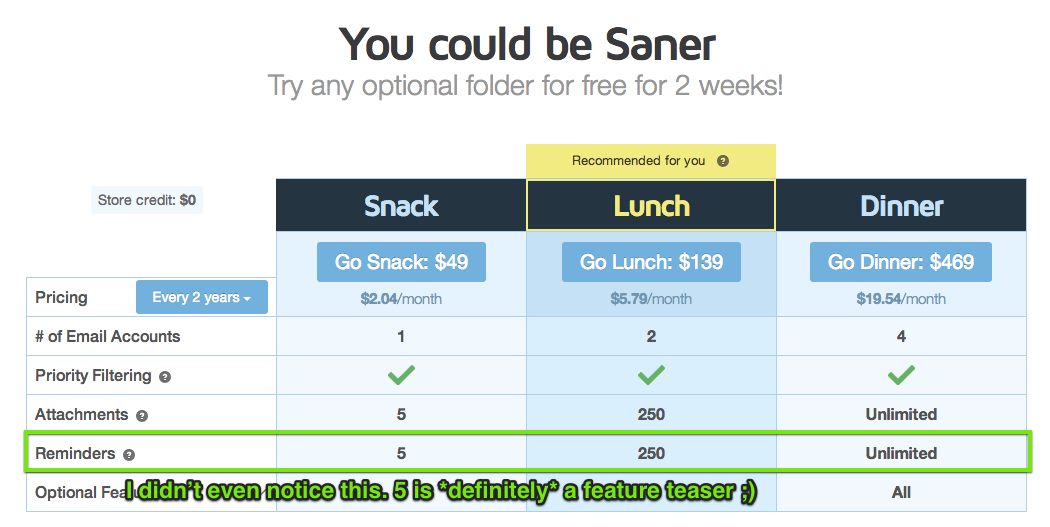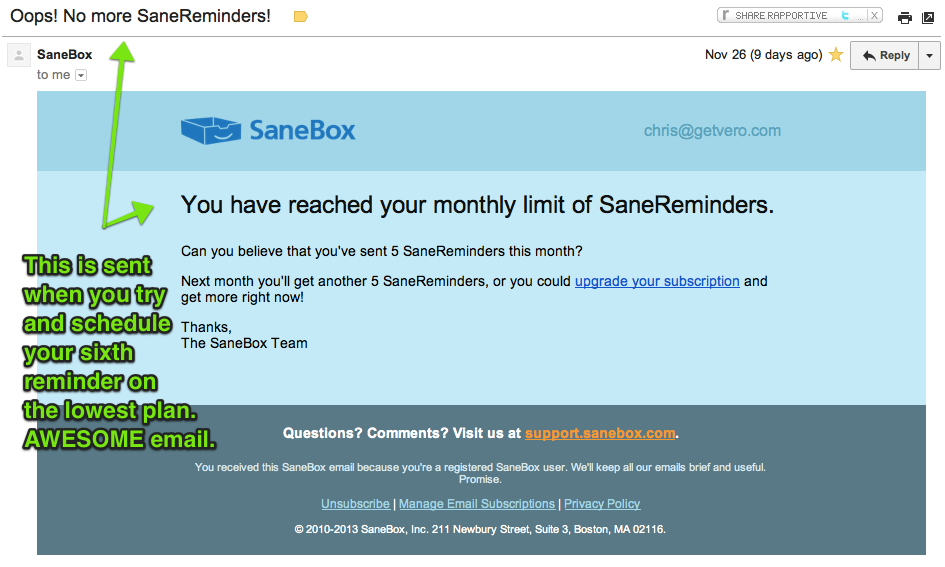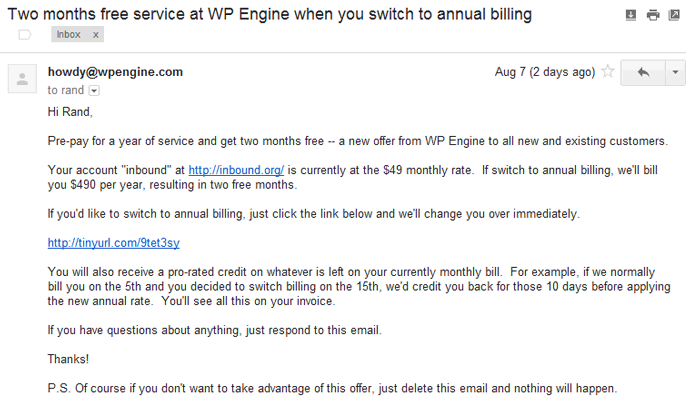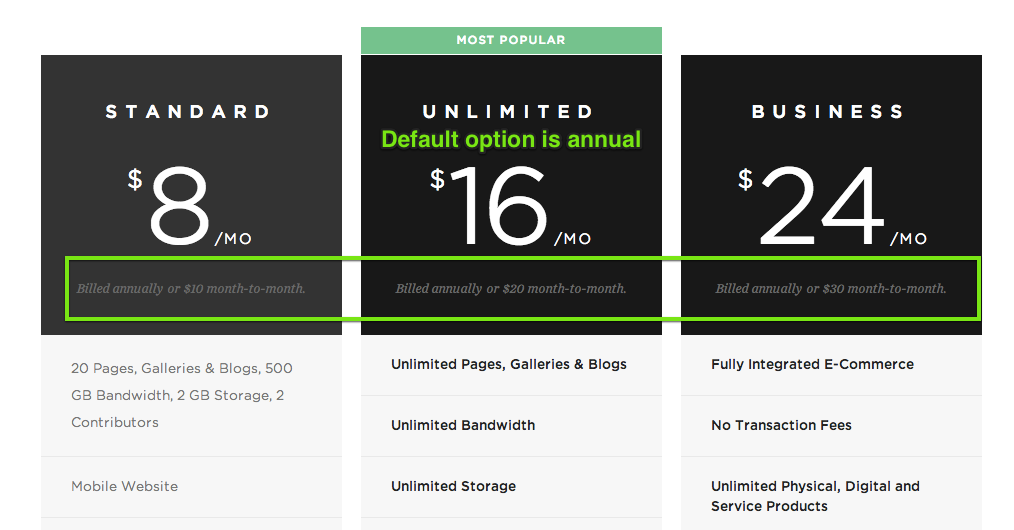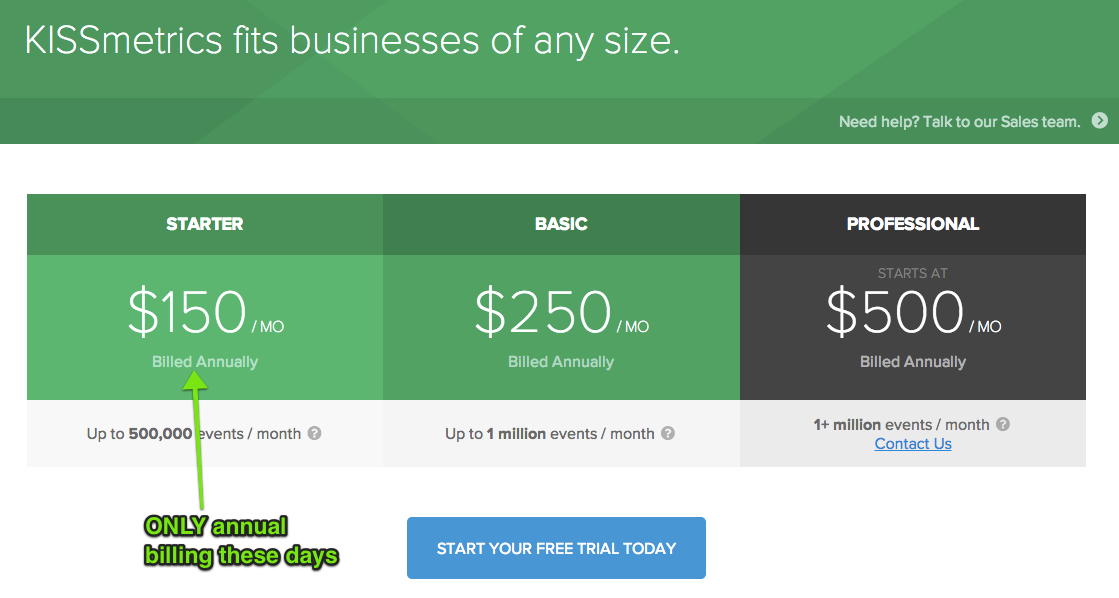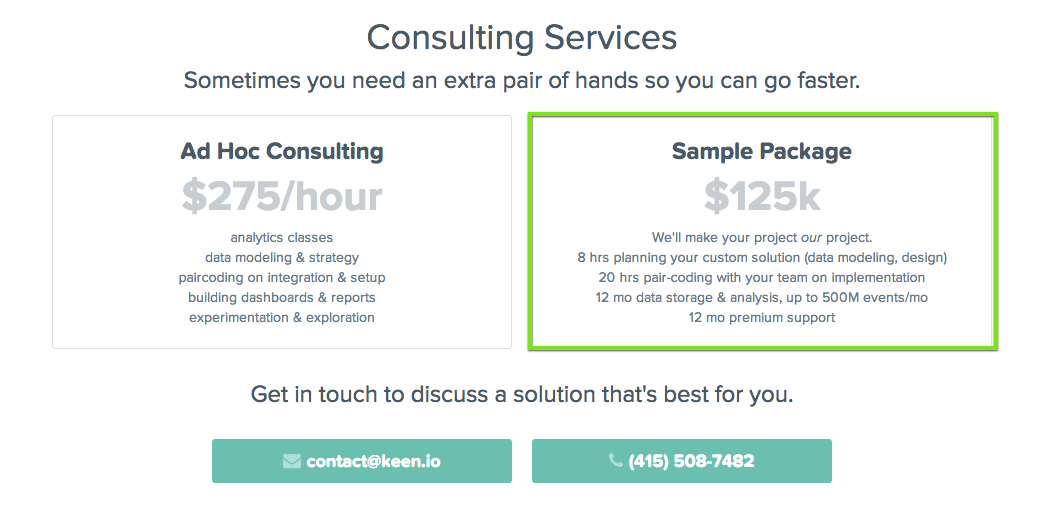- All Posts
- /
- Pricing Strategies
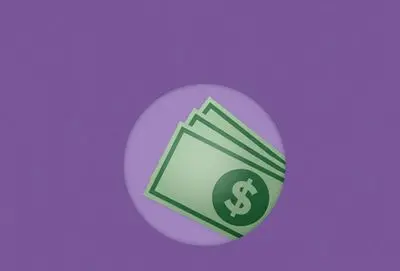
Pricing Strategies
News and Updates-
 Chris Hexton
Chris Hexton
-
Updated:Posted:
On this page
Would you rather make $10,000 or $8,000 from the same 4 customers?
Pricing your product correctly will directly affect the success of your business. Pricing not only influences your profitability but your cash flow too. This is vital in the life of any growing business: the more cash you have to plow back into your marketing, the faster you can move.
Here are 3 pricing strategies backed by data and real-life examples that you can use to increase your revenue per customer, multiply your cash flow or grow your revenues.
The free samples of gourmet sausage you see in supermarkets aren’t just there to make you feel good. They’re there to entice you to buy some.
Free samples are so successful that companies actually pay supermarkets in order to run them. Time detailed the power of free samples in an article discussing the power of reciprocity. “You’ve been given something, seemingly for nothing, and now you feel obligated to reciprocate by buying the item.” So true and so effective.
This tactic relies on new customers both liking the dealer’s product and becoming addicted to it in order to successful make the transaction worth it.
With these two influencing factors in mind, it’s no surprise that the concept of giving away freebies has become a mainstay online. 37Signals is well-known early adopter of the ‘free trial’ approach for their software as a service (SaaS) products. It is so successful that it is now essentially mainstream.
The idea of enticing customers, earning their trust and getting them ‘addicted’ is an effective one. Not only does it drive the concept of a free trial but is part of the reason tiered pricing is so effective for online software. By breaking down your prices into tiers you can offer features that can be used to incentivize customers to upgrade, capturing extra revenue as your loyal customers’ needs expand or their businesses grow. If they’re addicted to your product it’s a no brainer to upgrade.
When done well, tiered pricing is exceedingly effective. Sanebox use a few axes to split out their plans. One metric that moves customers to a higher plan is the number of ‘reminders’ they can use. Starting out on the “Snack” plan you can see that you get a usable, but tiny, 5 reminders per month . Once you discover this feature it’s not long before you send 5 reminders. At this point, Sanebox hit you with a super smooth upgrade path:
For most customers, Sanebox has become part of their lives at this point and it is much less hassle to upgrade to get a few more reminders than it is to abandon Sanebox or try and use a new reminder application. In this way tiered pricing helps Sanebox capture extra revenue from customers already using their product.
Dmitri Leonov, Growth Manager at Sanebox, shares the theory behind their human-centric pricing:
[quote the_quote=”We realized that people hate paying for anything online. Spending $0.99 on a useful app is a no-go, but when it comes to paying $5 for a coffee nobody thinks twice. With our pricing, we decided to ‘humanize’ our service by comparing it to things people are used to paying for – Snack plan for $2, Lunch for $6 and Dinner for $20. ” image=”https://getvero.com/wp-content/uploads/2013/12/member_9806226.jpeg” name=”Dmitri Leonov” link=”https://sanebox.com”]
Amazon uses a similar approach when it comes to their Kindle, essentially selling it as a loss-leader. Amazon is betting that the revenues and profits they will make from media sales will compensate for the 0 profits (or even small losses) they make from Kindle hardware sales upfront. Jeff Bezos has publicly acknowledged that the Kindle is a product with a very slim margin:
[external_quote the_quote=”We sell the hardware at our cost, so it is break-even on the hardware.” image=”https://getvero.com/wp-content/uploads/2013/12/jeff-bezos.jpg” name=”Jeff Bezos” link=””]
McDonald’s provides another, bricks-and-mortar example of a loss-leading strategy in action. At times, often during the summer, McDonald’s offers all sodas for $1. At first this seems a little crazy. All sizes for $1? In many instances this would cost McDonald’s money but there are a number of factors at play here that make it an effective strategy:
- Daniel Friedman shares in his book “Hidden Order: The Economics of Everyday Life“ that customers who feel they are getting a good deal generally spend more on other items. By giving customers unlimited refills McDonalds increases spending on other products. In reality many customers will not use the unlimited refills and others will use less than an entire cup: in aggregate, the cost to McDonalds will not rise dramatically, though many customers will spend more on other goods, leading to an effective sales boost.
- McDonalds saves money by making drinks self-serve. Saving time in the kitchen reduces wage overhead, increase efficiency and improves customer satisfaction. All good things that implicitly improve profit.
- Charging the same price for all sizes actually makes the largest number of customers possibly happy. McDonald’s offers all sodas for $1. Rather than having a single size (users determine how much they drink anyway), McDonalds acknowledges that many customers would actually pay more for a smaller size, as they see the large size as wasteful. By keeping all sizes, and charging the same price, they essentially please the largest number of customers.
Growth takeaway: Giving away a product or sample for free may cost you a small amount of money in the short term but make a lot more in the long term. Breaking down your offering into a series of plans might be the best way for you to maximize profitability. Alternately, using a product as a loss-leader for other products may be the best approach.
One of the most powerful ways to improve your cashflow (instantly) is to charge up front.
CostCo are the ultimate example. Every time CostCo opens a store the sales of their membership plans generates enough cashflow to open an entire new store. That is essentially an infinite growth machine and is part of the secret to their success.
[big_stat stat=”$55″ description=”The cash CostCo makes from the opening of a new store allows them to open another” position=”right”]
A CostCo membership costs $55/year per family. This is powerful for three reasons:
- It keeps out low-volume shoppers. Customers will only take up the CostCo membership if they feel they’ll get good value out of it by regularly shopping there. This narrows CostCo’s target market, increases foot traffic and ensures customers are likely to buy a lot of product: perfect for CostCo’s bulk selling approach.
- It gives CostCo a mandate to ensure their products are the cheapest. When CostCo dropped Coke in 2009 because they were squeezing their margins, this showed a guarantee from CostCo to its customers that they are dedicated to providing them the best prices. This builds trust and loyalty.
- The membership is a huge cashflow boost, allowing CostCo to outgrow it’s rivals. CostCo may not sell different product in different quantities but the cashflow injection gives them a business model advantage.
The direct online equivalent is Amazon Prime. Giving you free shipping and access to online media, Amazon bolsters it’s cash position using the annual Prime membership (paid up front). It also creates exclusivity and actually gives them more chances to learn more about you as a customer, ultimately tailoring your entire eCommerce experience for you.
This approach is not just limited to retail however. Jason Cohen, founder of WPEngine, shares how important annual billing is to a growing SaaS company. WPEngine is a dedicated WordPress hosting company and has been growing quickly. I think we could safely describe it as roaring success.
[quote the_quote=”Annual billing can transform the cash-flow behavior at any company, which is most important for bootstrapped companies who cannot rely on venture money for working capital. The 17% annual discount (2 months free) we give at WP Engine is well-worth the up-front cash that we receive, because we can spend that cash today on acquiring more customers or better serving those new customers. Otherwise, the expense of finding, acquiring, on-boarding, and running servers for those new customers isn’t paid back for many months.” image=”https://getvero.com/wp-content/uploads/2013/12/JasonCohen.jpg” name=”Jason Cohen” link=”https://www.wpengine.com”]
Annual billing is offered up front to all customers but, more importantly, is actively encouraged by WPEngine using an automated email campaign. Targeting engaged customers that get value from WPEngine gives WPEngine a reliable means of upgrading customers to annual plans, boosting it’s cashflow.
Despite offering a 17% discount (2 months free) WPEngine is able to use the cash to immediately grow their business by plowing this free cashflow back into marketing-related activites. In a way, you’re borrowing against the future, and it can really pay off. [Rand Fishkin], a customer of WPEngine wrote about how awesome this upgrade flow was:
[external_quote the_quote=”It might be the best user experience in an upgrade funnel I’ve ever had.” image=”https://getvero.com/wp-content/uploads/2013/12/rand.png” name=”Rand Fishkin” link=”https://www.seomoz.com”]
Needless to say, Rand upgraded immediately. A quick look at the science behind this approach is below:
- If customer A sticks around with your SaaS business for 24 months, paying $50 a month, you make $1,200 off that customer.
- If customer B sticks around with your SaaS business for 18 months, paying $50 a month, you make $900 off that customer.
- If customer B had upgraded to an annual plan after 12 months, you’d have charged them $500 ($600 with a 2 month discount), on top of the $600 you’d already earned the previous year. Assuming they still left after 18 months, you’d actually have made $1,100 from that customer.
Although this may not affect your churn rate, it does affect your average revenue per user. Assuming 3% of your customers upgrade to an annual plan after their first 12 months and that you have an average customer lifetime of 24 months, here’s your cashflows by month, for that period:
[Table2Chart table=”0″] chart: {type: ‘area’}, title: {text: ‘Cashflow Annual vs. Non-annual’}, xAxis: {categories: [10,11,12,13,14,15,16,17,18,19,20,21,22]}, yAxis: {min: 0,title: {text: ‘Cash’}}, series: [ {name: ‘No Annual’,color:’#83c000′,data: [50000,50000,50000,50000,68000,48500,48500,48500,48500,48500,48500,48500]}, {name: ‘Annual’,color:’#30b0db’,data: [50000,50000,50000,50000,50000,50000,50000,50000,50000,50000,50000,50000]} ] [/Table2Chart]
It doesn’t take a rocket science to see that an influx of $18,000 in month after 12 months is extremely useful for growth, particularly if you your CAC was $200. You could acquire 90 new customers, or $108,000 worth of new customers, sooner.
It is becoming more and more common to see annual billing either suggested as the default or offered as the only option amongst SaaS companies:
Pricing your discount is important to get right and depends entirely on your business and the average lifetime of your customer. A final example comes from Wet n’ Wild who are about to open a theme park in Sydney, Australia.
Here’s their pre-season ‘all access’ pass price vs. their daily entry price:
The differential here is very small. So small that even if I anticipate going to Wet n’ Wild once this summer I’d likely buy a season pass, just in case. As a consumer you might wonder how Wet ‘n Wild can get away with this. Just $30 more for unlimited entries? That’s crazy!
Not only does their season pass give them cash up front, it also makes them more money. Theme park repeat visitation rates are actually quite low, with many seeing the average customer return once ever two years. Even assuming Wet ‘n Wild will have a much higher repeat visitation rate, here are the revenue stats for 1,000 visitors (at adult prices) at a series of return visitation rates. It’s clear what is most lucrative:
[Table2Chart table=”0″] chart: {type: ‘column’}, title: {text: ‘Revenue per return rate vs. paid upfront’}, xAxis: {categories: [‘Upfront’,’40%’,’30%’,’20%’,’10%’]}, yAxis: {min: 0,title: {text: ‘Revenue (%)’}}, series: [{name: ‘Wet n Wild’,data: [99000,97986,90987,83988,76989],color: ‘#30b0db’}] [/Table2Chart]
This is an oversimplification of course, but it does prove a point.
Growth tactic: Look at your products and determine how you can create an offer that gives you cash up front. In determining the price, consider the overheads you’ll save and the lifetime value of a customer in order to actually generate more revenue.
When it comes to charging more it is important to recognise relative price inelasticity.
In other words customers who are willing to pay 10x your normal price are more than likely to be happy to pay 15x your standard price too.
Patrick McKenzie is a big believer in charging more. In his experience selling Appointment Reminder he has found that enterprise pricing is completely non-linear. In other words: charge a lot more than you think you should.
[external_quote the_quote=”name the plans correctly and they won’t even need to count servers to do things correctly. (“We’re an enterprise! Of course we need the Enterprise plan!”)” image=”https://getvero.com/wp-content/uploads/2013/12/patrick.jpg” name=”Patrick McKenzie” link=”https://www.kalzumeus.com/2012/08/13/doubling-saas-revenue/”]
Another example is Apple’s Mac Pro. A beast of a machine, it costs $2,999 in the US. That’s multiple times the price of a PC with the same specs.
Apple aren’t going after the home-gamer market, nor are they going after bargain hunters. They’re going after customers that appreciate the design aspects of their product and make a living thanks to the power of this media-focused device. Artists, designers, musicians. The value of the Mac Pro is much clearer to this audience and they have money to spend. Combined with their emotional attachment and, likely, long history with Mac products, Apple is able to charge a relatively exorbitant price for the Mac Pro.
Here’s the average profit Apple makes per Mac device they sell vs. HP. Estimates suggest their profit margin is over 6 times as great:
[Table2Chart table=”0″] chart: {type: ‘column’}, title: {text: ‘Profit per computer’}, xAxis: {categories: [‘Mac’,’HP’]}, yAxis: {min: 0,title: {text: ‘Profit ($)’}}, series: [{name: ‘Profit margin’,color: ‘#83c000’,data: [370,52]}] [/Table2Chart]
Vertu is a subsidiary of Nokia. It makes smartphones starting at $6,000. Given that these phones run Android it is not the OS that their customers are payiing for. Having determiend there was a niche for ‘designer’ phones, Nokia created a new company to exploit it. At $6,000 per phone, the average revenue per device is phenomenal when compared with Nokia’s main-stay $30 and $40 handsets, which still sell in the 10s of millions per year in emerging countries.
Both Apple and Vertu understand the power of finding a niche and price inelasticity.
Online companies are starting to embrace this approach themselves. Take Keen IO, an analytics provider. They advertise a consulting package. The primary aim with this package is to inform enterprise customers that they have this capability. It costs a dramatic $125,000USD. Contrast this with their lowest tier, which is $40 and you immediately see that there are segments of Keen IO’s customer base that put more value on doing things properly than saving a few dollars.
Keen IO’s founder shares that their plan has other advantages, too:
[quote the_quote=”We released our Sample Package because we have some high-end customers who need personalized attention to detail, and are willing to pay for it. It’s been a real success.” image=”https://getvero.com/wp-content/uploads/2013/12/3887fa4.jpg” name=”Kyle Wild” link=”https://keen.io”]
BounceExchange employ a similar strategy. Their prices are high to begin with but their full-service approach appeals to enterprise customers who happily pay well over 3 times their smaller customers. Ryan shares what’s great about this strategy:
[quote the_quote=”BounceExchange’s Enterprise packages are for customers that want results quickly and don’t have the time to—> strategize+design high converting graphics+execute+optimize regularly. We’ve had amazing success work with some fantastic clients – for these guys it’s not about cost but about getting the job done right and seeing a rapid return. I’m a huge believer in charging enterprise pricing for legitimate enterprise service. We don’t junior varisty account managers that have 50-100 accounts. We only employ top tier conversion directors that manage a tiny amount of accounts but are tied to client’s results. This makes the entry point a little too high for smaller new companies, but once they get legitimate traction, we are the first company they call.” image=”https://getvero.com/wp-content/uploads/2013/12/ryan-urban.jpg” name=”Ryan Urban” link=”https://bounceexchange.com”]
Growth tactic: Adjusting your pricing to reflect the different types of customers that are interacting with your business can unlock significant revenue. Customers see value along different axes: an enterprise customer is far less concerned with price and much more concered with service, efficiency and time-to-impact. Make use of price differentiation to maximize your bottom line.
Update your pricing
How can you unlock more money from your current users, customers and website visitors?
Using these three strategies, there are three things you could put into practice immediately:
- Release a really high-value product or pricing tier. Talk to your current customers and find out the characteristics of those that value your product on anything but price alone. Use your marketing site and pricing to single out these customers and give them the service they so desperately want and charge them for it.
- Charge up front. Use email marketing and other strategies to get new or active customers paying up front. This will improve your cash flow and your lifetime customer value in one go.
- Consider how you can leverage a loss-leading strategy. Free trials, cheaper products, offers: leverage everything you can to get customers addicted to your products and get them paying more.
